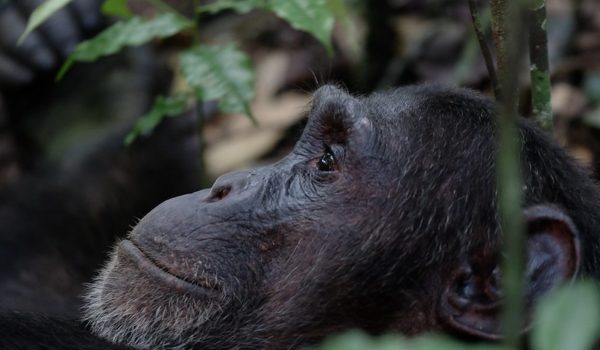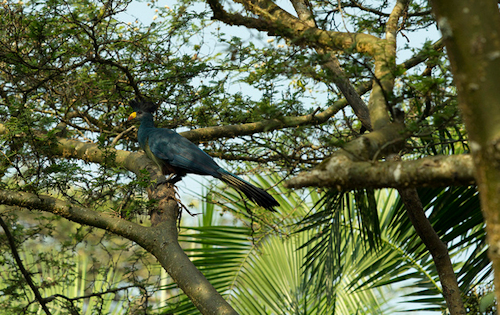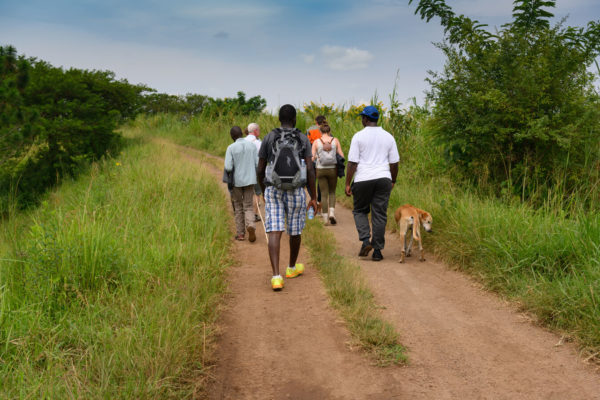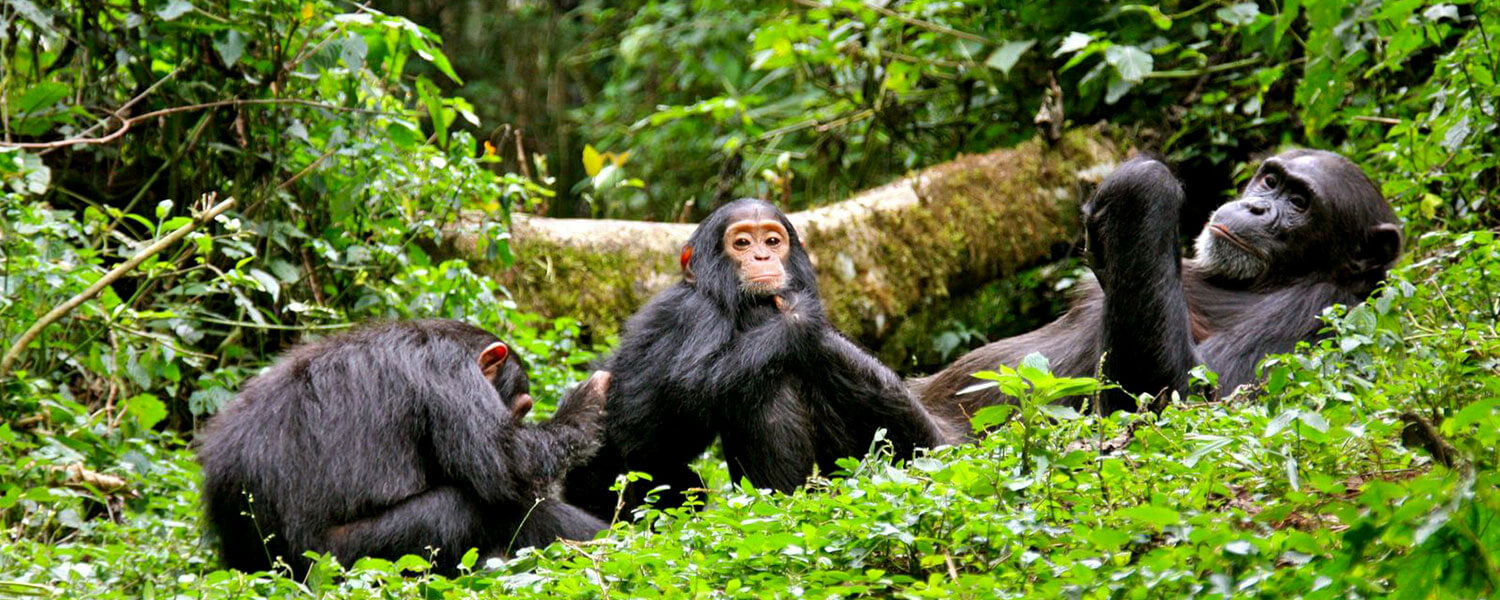Kibale Forest National Park
Kibale is one of the best places in Africa to view many primate species. Visitors can expect to see five or six species in addition to chimpanzee. The park provides refuge to the world’s largest population of the endangered red colobus monkey, and it is an important stronghold for Uganda mangabey, a rare national endemic (only occurs in Uganda).
Kibale is home to many mammal species aside from primates but they are rarely encountered. Elephant and buffalo roam the forest and other species present are giant forest hog, warthog, bushpig, bushbuck, blue, red and Peter’s duiker.

Best Time for Wildlife Viewing
The drier months of December to February and June to July are best for chimpanzee trekking. However, you can still go looking for the primates in the wetter months (March to May and August to November), which have the added attraction of low-season prices and lower tourist volumes. The East African sky is also less hazy outside the drier periods.
Scenary in Kabale
Kibale supports a range of habitats over different altitude zones. The tropical forest on the Fort Portal plateau changes to savannah in the Albertine Valley floor in the south. The forest has suffered less from logging in the past compared to some other forests in the country and is therefore still relatively pritine and home to some very big mahoganies, figs and other hardwoods.
Kibale National Park (formerly Kibale Forest NP) is the best place for chimpanzee trekking in Uganda. Thirteen species of primates have been recorded, which is the highest number for any Ugandan park, and several monkey species can usually be seen on forest walks. Birds and butterflies are abundant.

Birding in Kabale Forest
The park is a home to 325 variety of bird species, including 6 that are native to the Albertine Rift destination, that is to say dusky crimsonwing, black-capped apalis, blue-headed sunbird, collared apalis,red-faced woodland warbler and purple-breasted sunbird. Other Kibale specials are the green breasted pitta,African pitta, black bee-eater,Abyssinian groundthrush, yellow spotted nicator, little greenbul, black-eared ground thrush, brownchested alethe, yellow rumped tinker bird, blue-breasted kingfisher, along with the crowned eagle.
Nature and Hiking walks
The forest is rich in variety and the chimpanzee trekking may not give you enough time to take in all that the forest offers because you are focused on location the chimps. There is an option of a 12km hike through the forest. Here you are able to spot more variety of birds and animals. On a lucky day, you may encounter bush pigs, Duikers, and Elephants.
This is available in the dry season (December – February and June – September) because the wet season most of the trail is impassable. There is also an option of night walks to see the nocturnal when the other forest inhabitants rest. The rangers use powerful torches to seek nocturnal such as bush baby, hyrax, potto and occasionally serval cat and civet. These walks last 2.5 hours and leave at 7pm.


